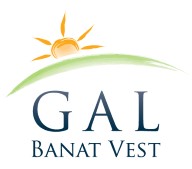 The town of Jimbolia is situated in the western part of Romania, 572 km from Bucharest by rail and 600 km by car, at the eastern longitude of 20 ° 38′ and the northern latitude of 45 ° 46′. Jimbolia lies in the western part of the Timis region, 39 km from the regional capital, Timisoara. The town of Jimbolia is situated in the western part of Romania, 572 km from Bucharest by rail and 600 km by car, at the eastern longitude of 20 ° 38′ and the northern latitude of 45 ° 46′. Jimbolia lies in the western part of the Timis region, 39 km from the regional capital, Timisoara.
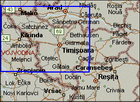 Geographically, it lies in the Banat Plains, between the plains of the Timis and Mures rivers, which are bordered by a series of villages, such as Checea, Carpinis, and Satchinez. The average altitude is 82m above sea level. Jimbolia also lies at the crossroads of some important communication routes that link Romania and the former Yugoslavia, being an important transit area at the border between Romania and Serbia. Geographically, it lies in the Banat Plains, between the plains of the Timis and Mures rivers, which are bordered by a series of villages, such as Checea, Carpinis, and Satchinez. The average altitude is 82m above sea level. Jimbolia also lies at the crossroads of some important communication routes that link Romania and the former Yugoslavia, being an important transit area at the border between Romania and Serbia.
 In the Romanian urban system, Jimbolia is considered a small town, with less than 20,000 inhabitants. It is ranked 175 of the 261 Romanian cities and towns. Within the Timis region, Jimbolia lies in 4th place (with 11,113 inhabitants in 2002), after Timisoara, Lugoj, and Sânnicolau Mare; it has 1,5% of the region’s total population and 2,5% of its urban population. In the Romanian urban system, Jimbolia is considered a small town, with less than 20,000 inhabitants. It is ranked 175 of the 261 Romanian cities and towns. Within the Timis region, Jimbolia lies in 4th place (with 11,113 inhabitants in 2002), after Timisoara, Lugoj, and Sânnicolau Mare; it has 1,5% of the region’s total population and 2,5% of its urban population.
 The geological strata are highly fragmented and have a great tectonic mobility, being part of the Jimbolia Plains, a subdivision of the Mures Plains in the northern part of the Banat Plains. The geological strata are highly fragmented and have a great tectonic mobility, being part of the Jimbolia Plains, a subdivision of the Mures Plains in the northern part of the Banat Plains.
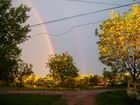 The average temperature of 10.7 ° C and the average annual rainfall of 570mm are characteristic of the town ‘s climate. Underground and geothermal waters are an important aspect of the local hydrological system. The average temperature of 10.7 ° C and the average annual rainfall of 570mm are characteristic of the town ‘s climate. Underground and geothermal waters are an important aspect of the local hydrological system.
The vegetation consists mostly of steppe meadows that have been replaced by different cultures (mainly cereal plants). The soil is highly fertile chernozem.
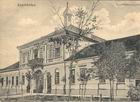 The town was mentioned for the first time in 1332. It appeared under various different names, such as Chumbul, Chombol, Csomboly, Zsomboly. After the arrival of the first German settlers in 1776, the town received the name Hatzfeld, which was changed to Jimbolia in 1924. In 1857, Jimbolia was connected to Timisoara by one of the first railways in the country. The first industrial unit – the brick and tile factory “Bohn & Co” (the future “Ceramica” factory) was created in 1864. The second half of the 18th century brought important changes in the structure of the town. Many new buildings and monuments were built, such as the Csito Castle (1863), the Administration Palace (1878), and the statue of St. Florian (1866). The town was mentioned for the first time in 1332. It appeared under various different names, such as Chumbul, Chombol, Csomboly, Zsomboly. After the arrival of the first German settlers in 1776, the town received the name Hatzfeld, which was changed to Jimbolia in 1924. In 1857, Jimbolia was connected to Timisoara by one of the first railways in the country. The first industrial unit – the brick and tile factory “Bohn & Co” (the future “Ceramica” factory) was created in 1864. The second half of the 18th century brought important changes in the structure of the town. Many new buildings and monuments were built, such as the Csito Castle (1863), the Administration Palace (1878), and the statue of St. Florian (1866).
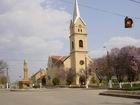 After World War II, Jimbolia became an important industrial centre. Since the Romanian Revolution, which took place in December 1989, the town has undergone important economical, political, and social transformations. The current prospects of the town are positive as far as foreign investments and general development are concerned. After World War II, Jimbolia became an important industrial centre. Since the Romanian Revolution, which took place in December 1989, the town has undergone important economical, political, and social transformations. The current prospects of the town are positive as far as foreign investments and general development are concerned.
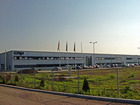 From an economic point of view, our major field of activity, agriculture, is of greatest importance. Of the 9735 hectares of fertile land, 97% is cultivated and 3% is pastures and hay-fields. 58% of the town’s active population is involved in industry. The industrial profile of the city is mainly determined by light industry (shoe, clothing, and textile industries), but also by the electronic, mechanical, and plastic industries. The largest industrial firms of the city are VOGT Romania (producing electronic components), Ciocanul Prodimpex (footwear), CRH (auto sub-assemblies), HALM (hydraulic pumps), and Ani Fashion (clothes), Faulhaber (micro motors), and Kabelsysteme Hatzfeld (audio-video cables). From an economic point of view, our major field of activity, agriculture, is of greatest importance. Of the 9735 hectares of fertile land, 97% is cultivated and 3% is pastures and hay-fields. 58% of the town’s active population is involved in industry. The industrial profile of the city is mainly determined by light industry (shoe, clothing, and textile industries), but also by the electronic, mechanical, and plastic industries. The largest industrial firms of the city are VOGT Romania (producing electronic components), Ciocanul Prodimpex (footwear), CRH (auto sub-assemblies), HALM (hydraulic pumps), and Ani Fashion (clothes), Faulhaber (micro motors), and Kabelsysteme Hatzfeld (audio-video cables).
The tertiary sector of industry encompasses the whole range of services and represents 38% of total industrial activity.
Jimbolia has two secondary railways, connecting Timisoara – Jimbolia – Kikinda (in the direction of Serbia), and Jimbolia – Lovrin. Jimbolia is also connected to the highways 59A, Timisoara– Jimbolia – Srbska Crnja (Serbia), and 59C, Jimbolia – Sannicolau Mare. The secondary road DJ 594 connects Jimbolia to Lovrin.
 The town has five nursery schools, a primary school with over one thousand pupils, a secondary school and vocational school with twelve hundred pupils. The secondary school has been developed with government support and with the help of the German State of North Rhine–Westfalia. It has a large vocational department with computer rooms and laboratories for electro-technical, electronic, mechanical, welding, and hydraulic – pneumatic activities, as well as for the repair of agricultural machines. The town has five nursery schools, a primary school with over one thousand pupils, a secondary school and vocational school with twelve hundred pupils. The secondary school has been developed with government support and with the help of the German State of North Rhine–Westfalia. It has a large vocational department with computer rooms and laboratories for electro-technical, electronic, mechanical, welding, and hydraulic – pneumatic activities, as well as for the repair of agricultural machines.
 Social. In 2004, the town hall of Jimbolia developed and published the Strategy for the Sustainable Development of Jimbolia in collaboration with the Microregional Association for City Development Banat-Ripensis. Together with other associations, the town hall has opened five social centres for a large number of disadvantaged people, including children and young people with disabilities, poor and abused children, and elderly persons. Social. In 2004, the town hall of Jimbolia developed and published the Strategy for the Sustainable Development of Jimbolia in collaboration with the Microregional Association for City Development Banat-Ripensis. Together with other associations, the town hall has opened five social centres for a large number of disadvantaged people, including children and young people with disabilities, poor and abused children, and elderly persons.
Medical services are provided by five private medical practices, four private dental surgeries, and a city hospital with a capacity of 125 beds.
 Culture. Recently, the town has known a real cultural rebirth due to its very active cultural institutions: the community centre, the four museums, the literary café, and the city library. Culture. Recently, the town has known a real cultural rebirth due to its very active cultural institutions: the community centre, the four museums, the literary café, and the city library.
The most impressive of these is the Petre Stoica Romanian-German Cultural Foundation, led by one of the greatest contemporary Romanian poets, who has been awarded many national and international prizes. The foundation has a library of 16,000 extremely valuable books and manuscripts in both Romanian and German, a collection of coins, stamps, bookplates, pictures, engravings, and old household objects. The main aim of the foundation is the reconstruction of the cultural and spiritual life of the Romanians and Germans in the Banat region.
The foundation is proud of its substantial archive of documents (official papers, photos, letters, posters, advertisements, and newspapers) about the people of Jimbolia and their lives before 1944. Supported by the town hall, the foundation will soon open the Museum of the Romanian Press.
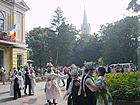 A series of events organized by the town hall in the last few years, including the Jimbolia Rally, Jimbo-blues (Euro-regional festival of blues music), the Jimbolia town fete, the Holiday of Ignat (winter gastronomic competition), and Christmas Tree (the Christmas traditions festival), have already become tradition. A series of events organized by the town hall in the last few years, including the Jimbolia Rally, Jimbo-blues (Euro-regional festival of blues music), the Jimbolia town fete, the Holiday of Ignat (winter gastronomic competition), and Christmas Tree (the Christmas traditions festival), have already become tradition.
For sports activities, the town has a stadium with 1000 seats,
a sports hall for school children, and a swimming pool with thermal water and sports facilities. A new city sports hall is currently under construction.
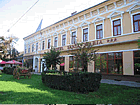 There are also four restaurants, a three-star hotel, and many bars. There are also four restaurants, a three-star hotel, and many bars.
Last but not least, the city has established several important international links with Kikinda and Novi Kneževac (Serbia),
Pusztamérges (Hungary) and Gundelfingen (Germany), and is currently looking for new partners. |
 The town of Jimbolia is situated in the western part of Romania, 572 km from Bucharest by rail and 600 km by car, at the eastern longitude of 20 ° 38′ and the northern latitude of 45 ° 46′. Jimbolia lies in the western part of the Timis region, 39 km from the regional capital, Timisoara.
The town of Jimbolia is situated in the western part of Romania, 572 km from Bucharest by rail and 600 km by car, at the eastern longitude of 20 ° 38′ and the northern latitude of 45 ° 46′. Jimbolia lies in the western part of the Timis region, 39 km from the regional capital, Timisoara.





 From an economic point of view, our major field of activity, agriculture, is of greatest importance. Of the 9735 hectares of fertile land, 97% is cultivated and 3% is pastures and hay-fields. 58% of the town’s active population is involved in industry. The industrial profile of the city is mainly determined by light industry (shoe, clothing, and textile industries), but also by the electronic, mechanical, and plastic industries. The largest industrial firms of the city are VOGT Romania (producing electronic components), Ciocanul Prodimpex (footwear), CRH (auto sub-assemblies), HALM (hydraulic pumps), and Ani Fashion (clothes), Faulhaber (micro motors), and Kabelsysteme Hatzfeld (audio-video cables).
From an economic point of view, our major field of activity, agriculture, is of greatest importance. Of the 9735 hectares of fertile land, 97% is cultivated and 3% is pastures and hay-fields. 58% of the town’s active population is involved in industry. The industrial profile of the city is mainly determined by light industry (shoe, clothing, and textile industries), but also by the electronic, mechanical, and plastic industries. The largest industrial firms of the city are VOGT Romania (producing electronic components), Ciocanul Prodimpex (footwear), CRH (auto sub-assemblies), HALM (hydraulic pumps), and Ani Fashion (clothes), Faulhaber (micro motors), and Kabelsysteme Hatzfeld (audio-video cables). The town has five nursery schools, a primary school with over one thousand pupils, a secondary school and vocational school with twelve hundred pupils. The secondary school has been developed with government support and with the help of the German State of North Rhine–Westfalia. It has a large vocational department with computer rooms and laboratories for electro-technical, electronic, mechanical, welding, and hydraulic – pneumatic activities, as well as for the repair of agricultural machines.
The town has five nursery schools, a primary school with over one thousand pupils, a secondary school and vocational school with twelve hundred pupils. The secondary school has been developed with government support and with the help of the German State of North Rhine–Westfalia. It has a large vocational department with computer rooms and laboratories for electro-technical, electronic, mechanical, welding, and hydraulic – pneumatic activities, as well as for the repair of agricultural machines.
 Culture. Recently, the town has known a real cultural rebirth due to its very active cultural institutions: the community centre, the four museums, the literary café, and the city library.
Culture. Recently, the town has known a real cultural rebirth due to its very active cultural institutions: the community centre, the four museums, the literary café, and the city library. A series of events organized by the town hall in the last few years, including the Jimbolia Rally, Jimbo-blues (Euro-regional festival of blues music), the Jimbolia town fete, the Holiday of Ignat (winter gastronomic competition), and Christmas Tree (the Christmas traditions festival), have already become tradition.
A series of events organized by the town hall in the last few years, including the Jimbolia Rally, Jimbo-blues (Euro-regional festival of blues music), the Jimbolia town fete, the Holiday of Ignat (winter gastronomic competition), and Christmas Tree (the Christmas traditions festival), have already become tradition. There are also four restaurants, a three-star hotel, and many bars.
There are also four restaurants, a three-star hotel, and many bars.
